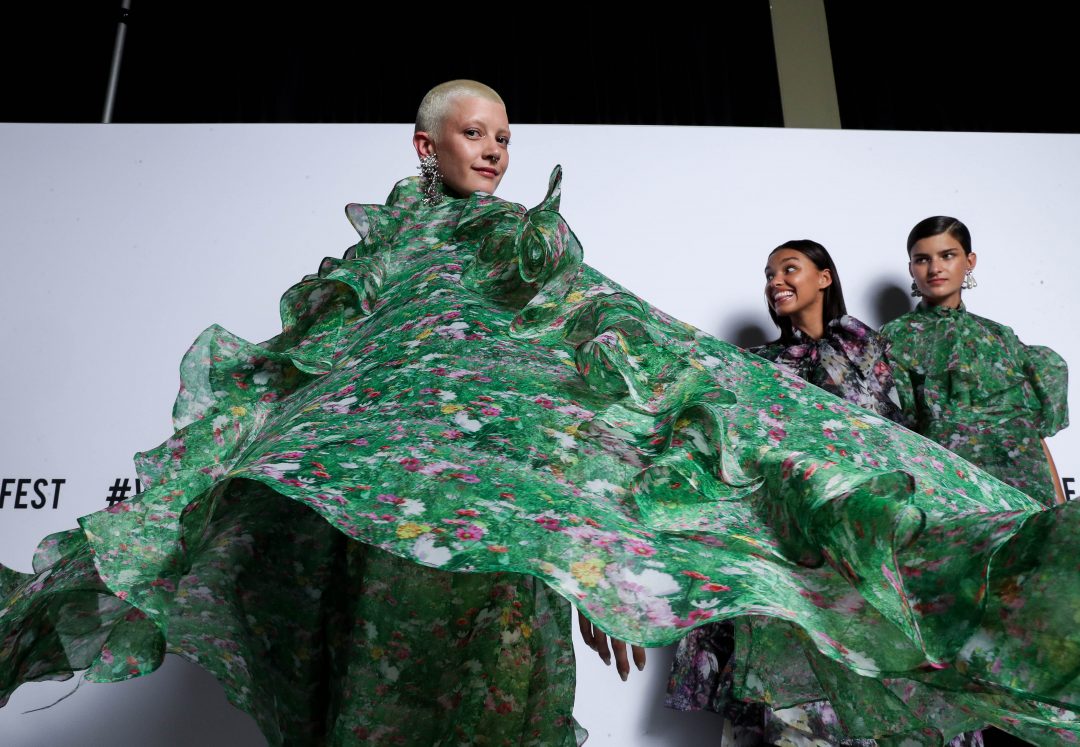The fashion revolution was underway way before this, writes Janice Breen Burns. Main photo: Romance Was Born by Lucas Dawson Photography, shot at the 2020 Melbourne Fashion Festival. This story first appeared in Nine Media/TheAge/TheSydneyMorningHerald. Longform; 15 minutes read time.
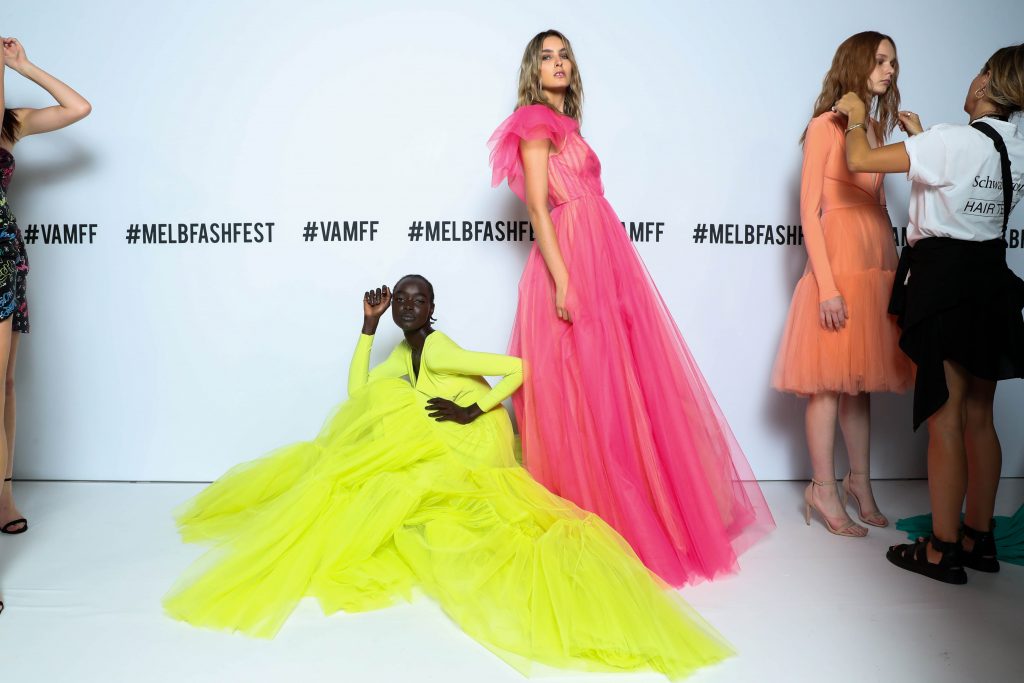
Fashion was really hitting its straps before Covid-19 sent us all to hell in a handbasket. Admittedly it’s tricky thinking now where a fresh-off-the-rack frock or pair of trousers might fit into life a la quarantine (and so, sadly, bodes fashion’s likely near future), but it was also barely a month ago I muscled into a huddle (shockingly close, now I think of it) of veteren fashionistocrats remarking what a joy, what a transformed industry this is since its dodgy ethics, global toxicity and stupid elitism were nitpicked toward extinction by five-odd years of social media.
The neo-millenial GenZ consumer, you see, is so socio-politically aware and bristling with judgemental umbrage that when they bitch en masse, stuff gets done. Good stuff. Seismic shifting stuff.
“Like, who knew we’d have curvy girls and hijabs, and women over 70 on the runways,” one veteren of the fashion education system observed, “Or brands selling their new moral codes and sustainability policies as routinely as they sell their seasonal collections?”
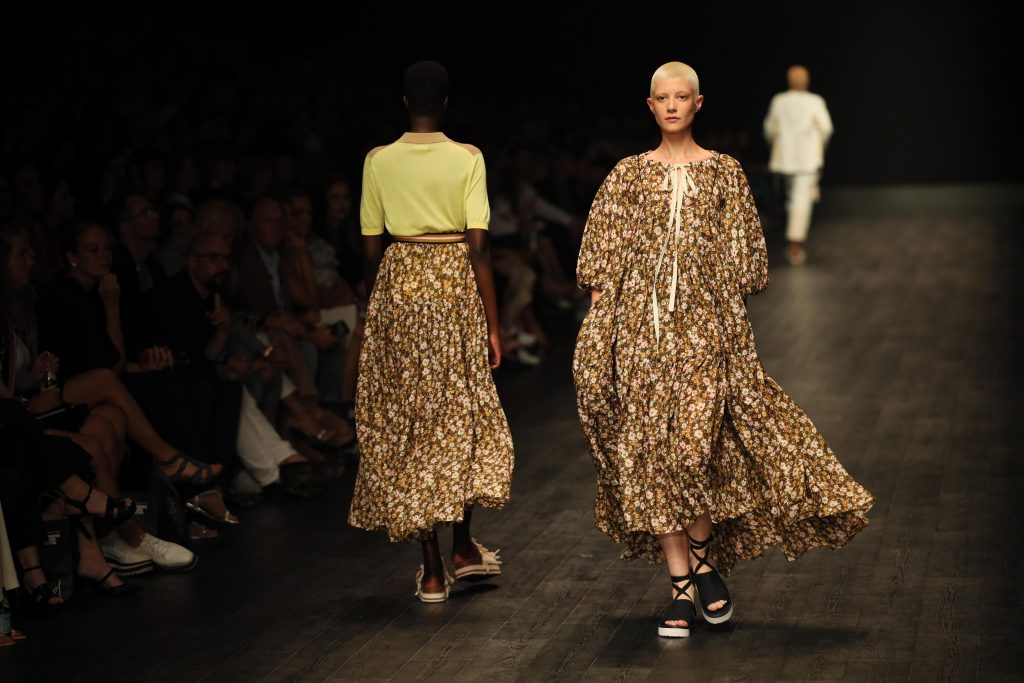
It’s been a tanker-turning transformation so far for fashion and it’s far from done yet. There is still the no-small-matter of whole economies yet to be weaned off the industry’s toxic practices. And whole generations still addicted to overconsumption of those heartfluttery pinmoney frocklets that arrive in never-ending streams to its fasterfaster cheapercheaper retail models.
Maybe a pandemic was the extra whipcrack fashion’s slowest-evolving, least morally savvy global conglomerates needed. New York based futurist Li Edelkoort, one of fashion’s most influential commentators, thinks so: “…We will learn how to be happy with just with a simple dress,” she told Dezeen magazine last week, “The impact of the virus will be cultural and crucial to building an alternative and profoundly different world…a blank page for a new beginning.” Amen to that.
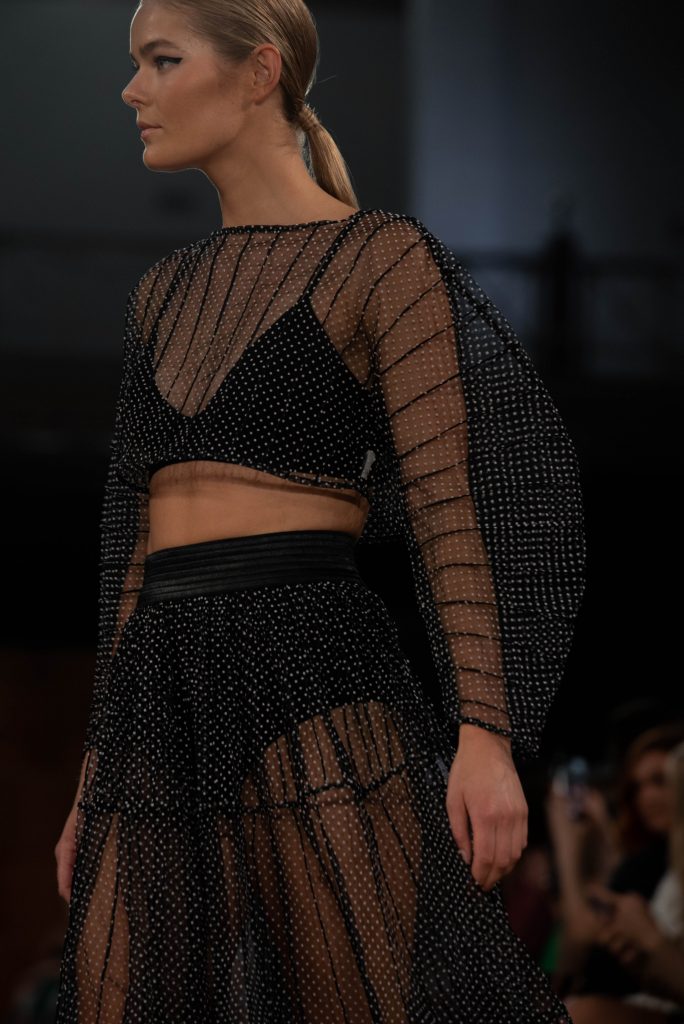
In 2015 Edelkoort foretold the end of fashion “as we know it” for the “ridiculous and pathetic parody” of itself that it had become. Among her fondest wishes, she listed the rise of small-fry makers and couturiers and “an arts-and-crafts century where manual labour is cherished above everything else.” Her wish, pre-pandemic, was already coming true. Post-pandemic, it has more than a fighting chance.
Meanwhile, the battering of a thousand scandals has grown fashion up, at least to a degree. It’s a nicer industry than it was even a couple of years ago, more sensitive, for starters, to our personal, political, cultural and social bugbears. It’s also got big plans for sustainable, ethical, less toxic production models and a circular economy, an afterlife for every one of the 150 billion new garments (according to a World Economic Forum estimate) it racks up every year. Fashion’s future blueprint is a Greenie’s dream, if patchy in parts, embryonic and way too slow in others.
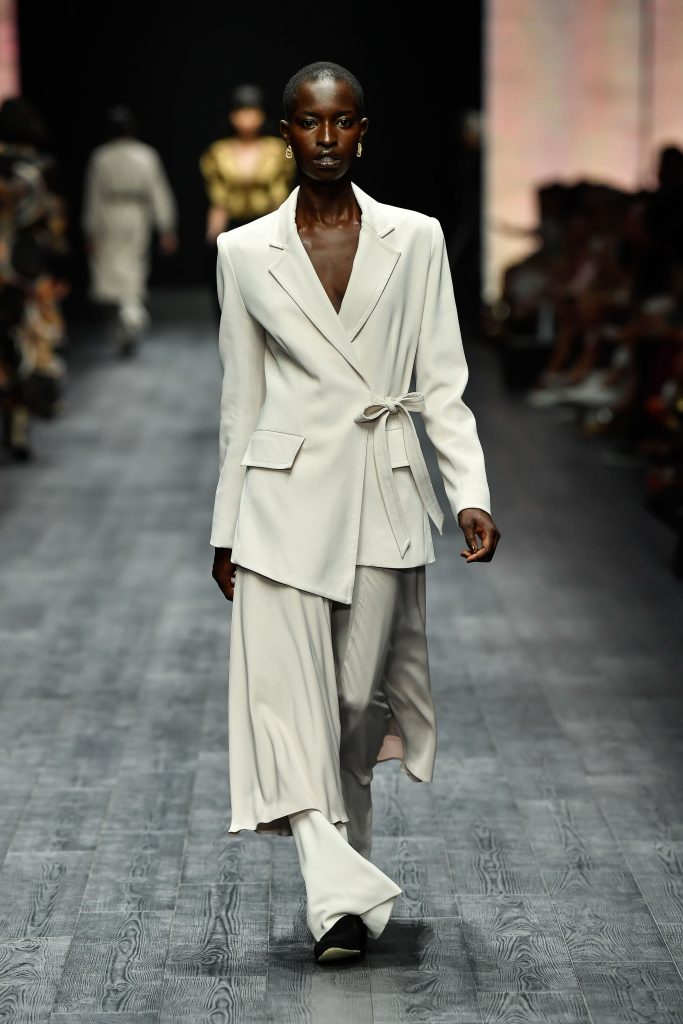
But the most remarkable thing about fashion right now, is the prophetic way it’s Nowness, Goodness and Nextness have already evolved toward a post-pandemic world, a vision of Edelkoort’s “arts-and-crafts century”.
NOWNESS
We are the bosses of fashion now, not fashion the boss of us. Fashion’s trend cycles are more sensible and followable than they have ever been, basically because they percolate up from us, not trickle down from a dozen global overlords in Paris or New York. Trends now are less designed for short lives of seasonal “planned obsolescence”, than slowed and synchronised to our rhythms as consumers.
Some editors even argue there are no trends: anything goes. And this is kindof sortof true, especially if you’re a self-expressive type who doesn’t want to look remotely like anybody else. In that case – congratulations – your chutzpah, your wildly exotic wardrobe, your off-piste take on Nowness, is actually a rich new definition of fashion luxury. Fashion’s “new beginning” will definitely involve you.
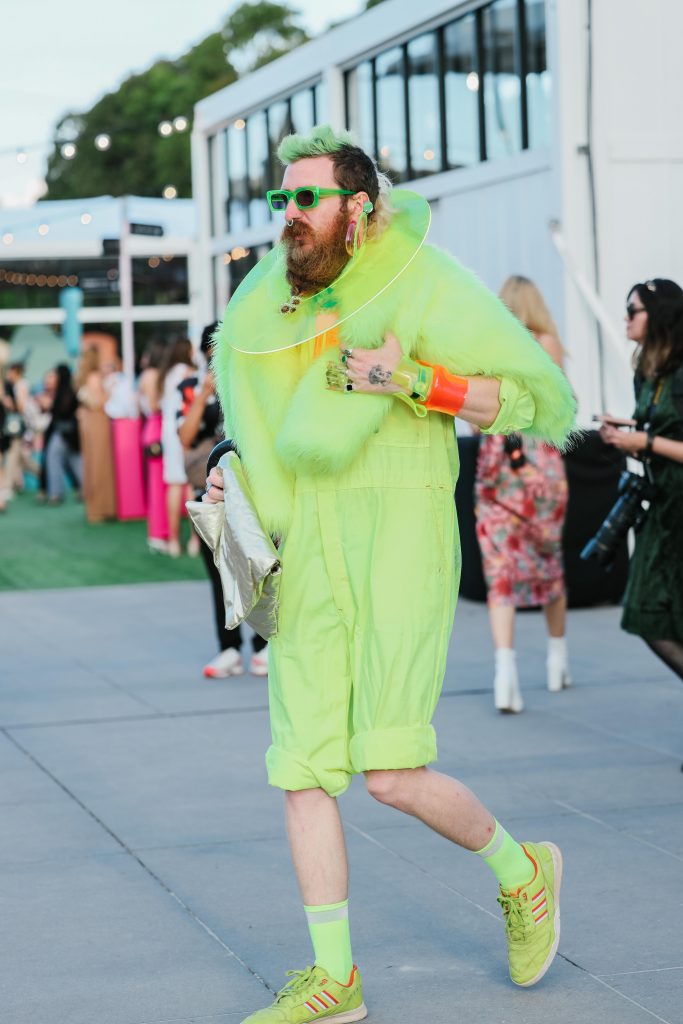
For the rest of us, for fashion’s herd comforted when our choices chime with our tribe, trends don’t so much go “in” and “out” as churn among us, sometimes for years, always “in” if enough of us like wearing them.
Think of lowslung hipster jeans and trousers for example; definitively cool for a decade before they lagged a season or two then returned with a bang for ten more. We loved them too much to give up. Right now however, lowslungs are among a hensteeth handful of “out” trends despite that they’ll cycle back, one day. Just who knows when.
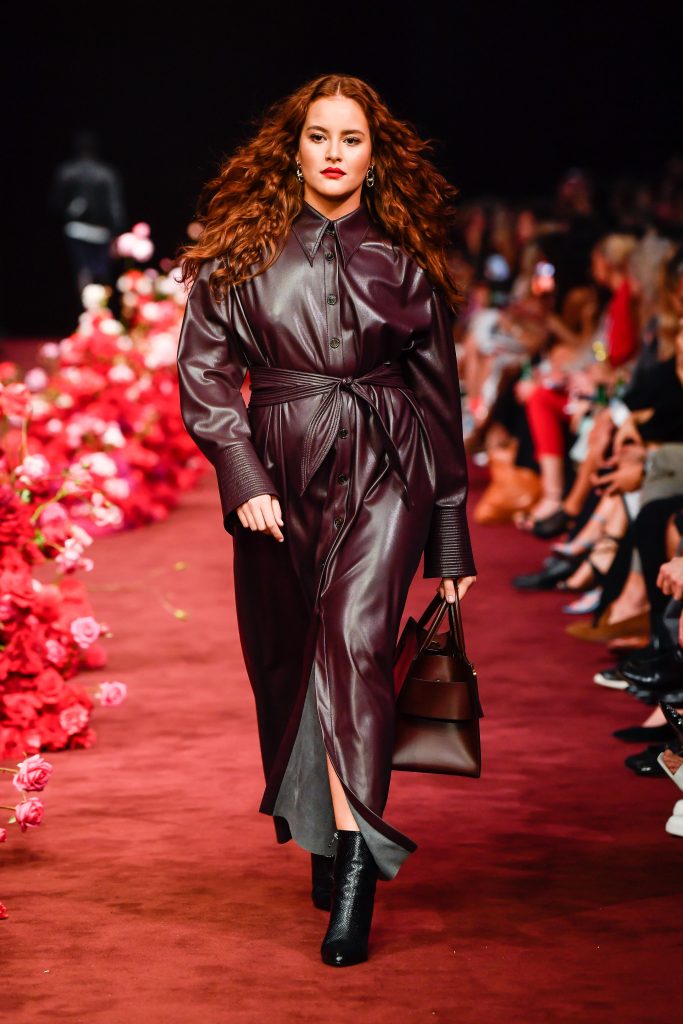
Trends such as white “right-brand” sneakers, on the other hand, and floral calf-grazer Zimmermannesque ruffled frocks, square-toed-strappy heels, classic and modified trench-style coats, tailored blazers, balloon sleeved and ostentatiously frilled blouses, tucked-in jumpers and sugar-bag skirts and shorts, have also proliferated on the “in fashion” list for several seasons, some for years, and will stick around until we’re sick of them too.
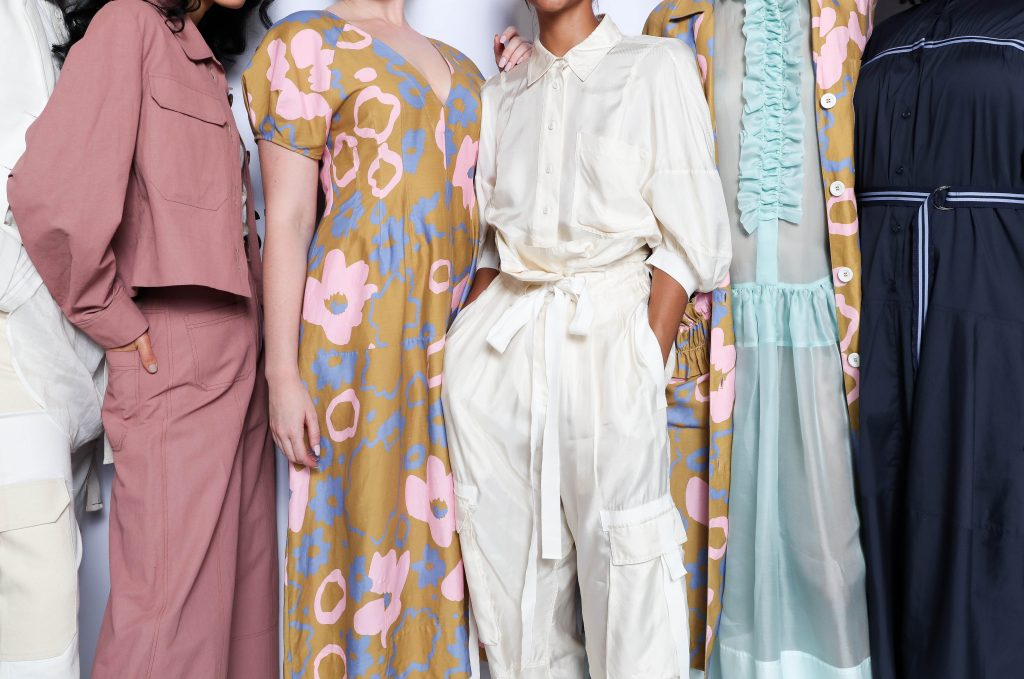
The freshest of fresh trends however, fashion’s Right Nowness assumed by the coolest of cool, the most influential of influencers, is defined by this year’s leather, lacquered or latex skirts (from pencil to calf-grazer A-lines), tailored metallic or sequinned knicker-flasher frocklets, voluminous trapeze dresses, droopingly oversized tailored blazers and trousers, and thinly tailored pants cut to split and spill over your shoes.
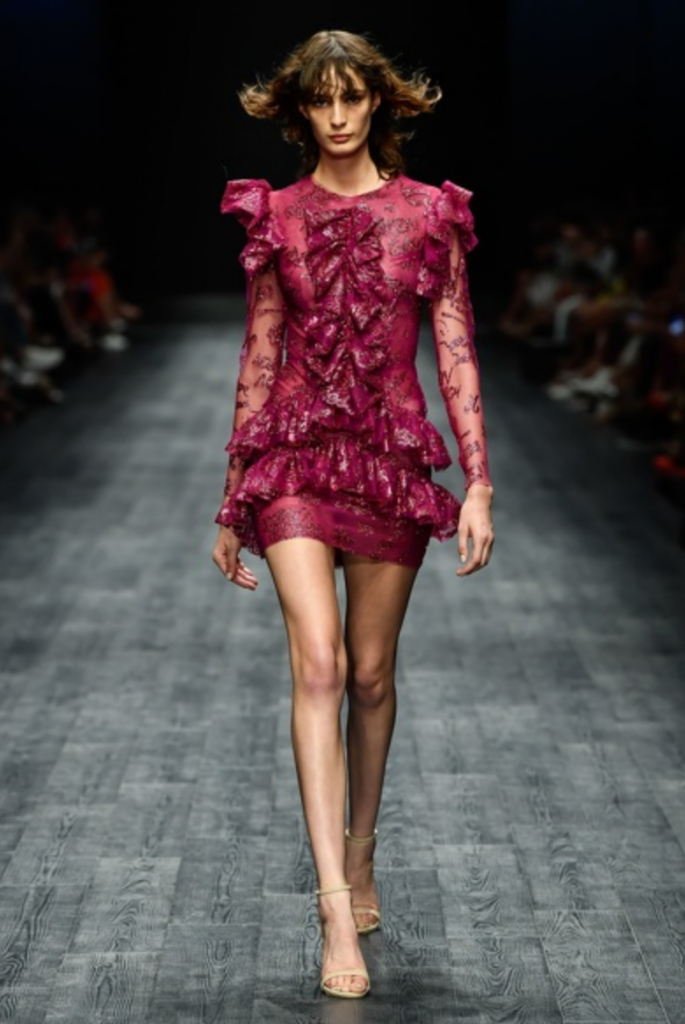
GOODNESS
Big smacks beget big reforms. Especially in fashion which swings on the whims of a moody, quicksandy global community pocked with offbeat mega-influencers (Cardi B has 60 million Instagram followers, Billie Eilish 58 million, Chloe Kardashian 106 million, a dancy teen named Charli D’Amelio got 35 million followers virtually overnight on TikTok) and prone to flashes of outrage, kangaroo judgements and social media addiction.
One morally tricky pitch, one culturally insensitive motif, one bad news story or too-white too-thin too-young runway show and bang, in a day your frocks can be cactus to a significant chunk of their previously fantatical following.
Last year’s “Pradamalia” and Dolce & Gabbana scandals, for example, did more to accelerate fashion’s global moral code toward a fairer, kinder, more Christian future than a stadium full of vicars. At the time, the insults inherant in Dolce & Gabbana’s jolly ad campaign featuring a Chinese model wrestling pizza and spagetti onto chopsticks, and the resemblance of Prada’s luxury ($1000 a pop) handbag dangles to an historically racist monkey cariacature, were apparently missed at their respective head offices. But not when they hit their respective markets.
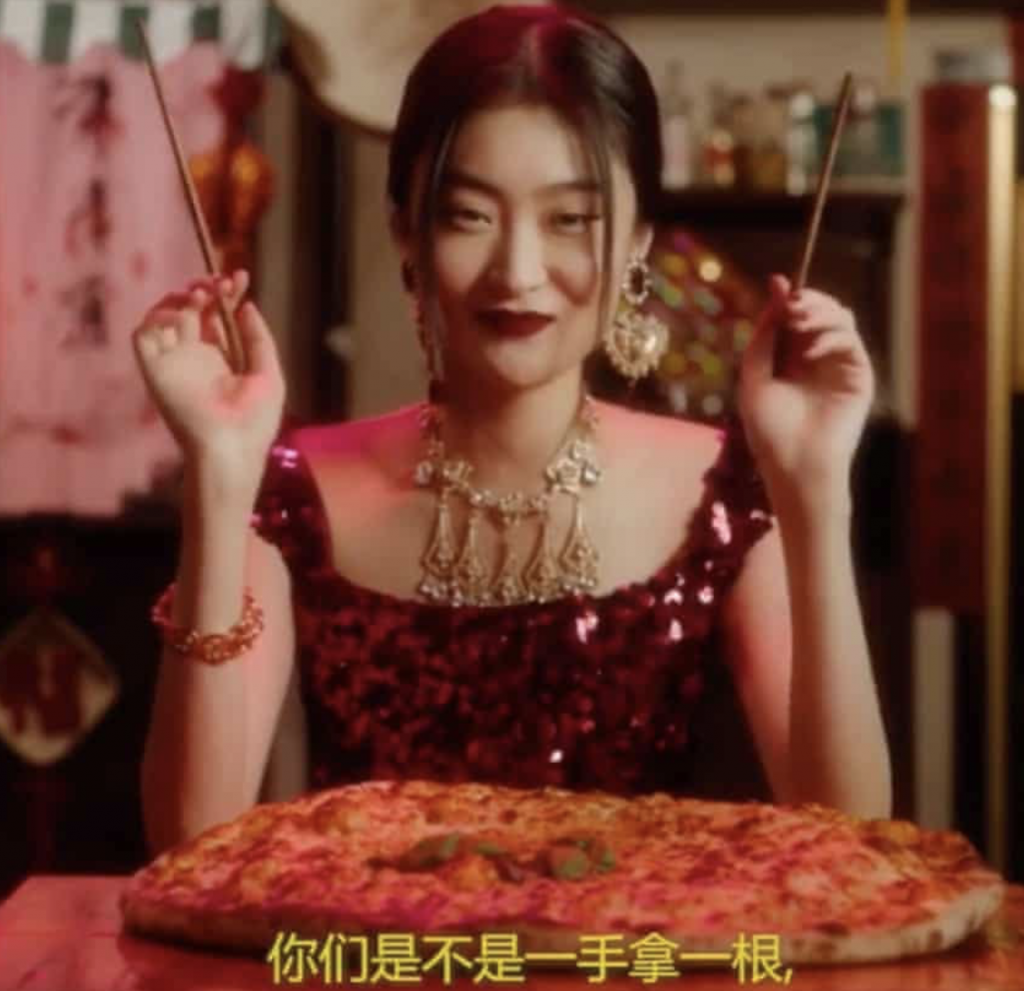
Similarly, when Burberry incinerated its annual $AU60odd million worth of unsold luxury goods to avoid discounting and maintain the brand’s air of exclusivity, who knew such outrage would ensue.
“Boycott XXXX” is not a hashtag any fashion brand, small startup or global conglomerate, wants linked to their media campaigns and social streams. But if it is, as it was to Prada, D&G, Burberry and a moving feast of others for a raft of scandalous reasons, then good stuff – reactive, corrective stuff – often starts to happen.
There isn’t a campaign or runway now for example, that isn’t carefully scrutinised for its fair and loving reflection of every kind of human.
Those annual incinerations and dumping of unsold luxury goods have stopped too. Burberry for example, and every other luxury brand that watched its media lynching, has established a zero waste policy and links to resell markets for its surplus such as secondhand fashion e-tailers The RealReal and Farfetch Second Life.
Fashion is officially in the business of doing what’s morally right, what’s logical and sensible, what’s humanely good, and the least offensive to everyone. (Yes!) It’s not perfect yet. It’s shockingly imperfect in some pockets. But post-pandemic, it’s likely Goodness will be its blueprint.
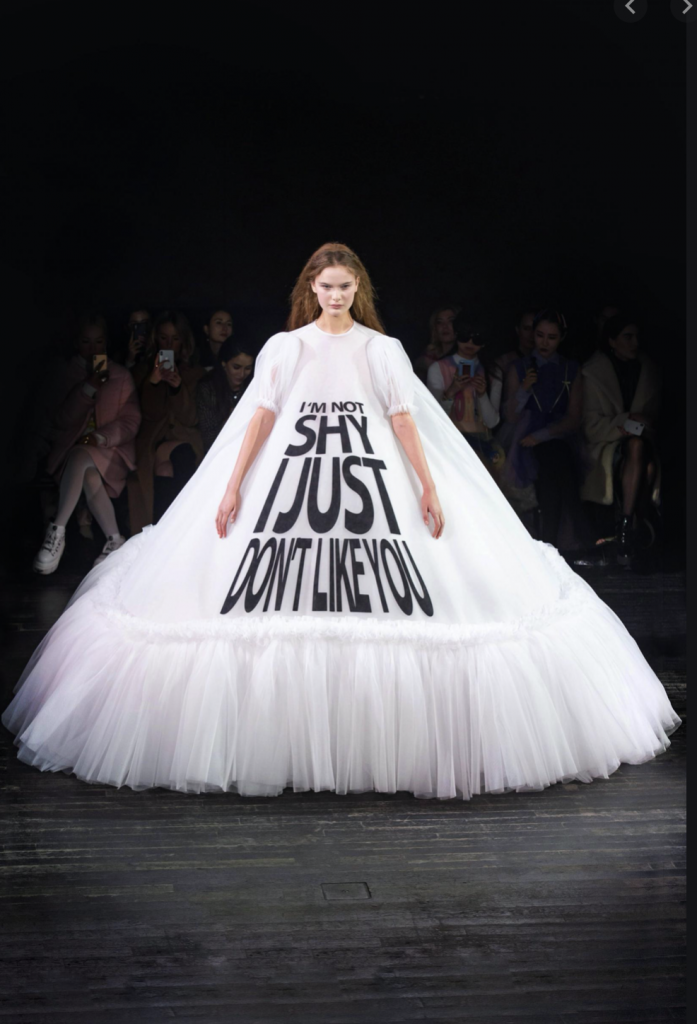
So far, with every misstep that’s crystalised consumers’ kaleidescopic sensitivities, fashion mostly (not always, but especially when profits are at stake, what brand won’t give revolution a crack?) has addressed and incorporated change into its business models and moral codes. (Inclusivity officer and culture manager are actual fashion jobs now.)
Fashion is no longer idiotically exclusive, like it used to be. Now we’re all on its runways and radars: all ages, shapes, races, gender identities, physical and mental abilities, political dispositions, cultural affiliations…
Fashion has no choice but to communicate with us intelligently, and be as humorous, as tolerant and as connected to reality as the kaleidoscope of consumers it now embraces.
Maria Grazia Chiuri’s infamous “We should all be feminists” collection for Dior in 2017 was a whimsical swivel moment in this new liberal order, the first of several by Dior’s first female creative director to hit the feminist nail on its proverbial populist head. The collection’s icon was a simple slogan T-shirt but it blossomed well beyond that, plugging into everything that was bubbling and popping among the women of Earth at the time and ever since.
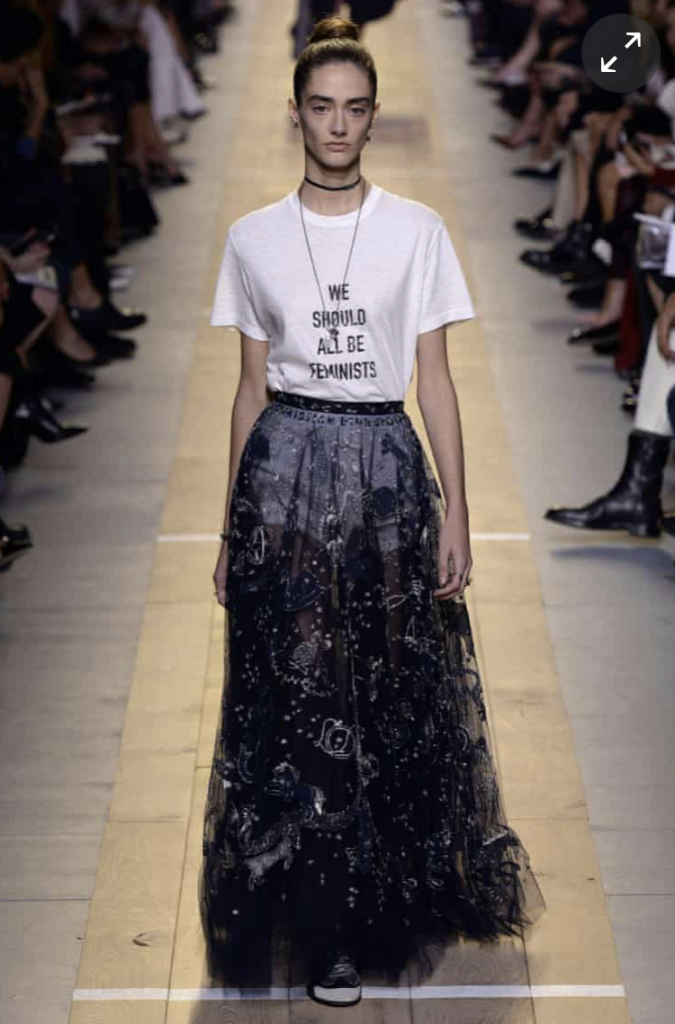
Viktor and Rolf’s mountainous tulle muumuus of 2018 were also a revelation at, ironically, Paris couture week. Their slogan-like text boxes, rough graffiti over ostentatious glamour, worked like women’s intimate jokes and rueful stories-of-my-life; “Sorry I’m Late, I didn’t want to come”, “No” and, “I’m not shy, I just don’t like you”.
Intelligent expression in other words, is fashion’s new pink. And social media comedienne Celeste Barber’s affectionate piss-taking of its male-gazingly gorgeous glamour shots, surely the new black.
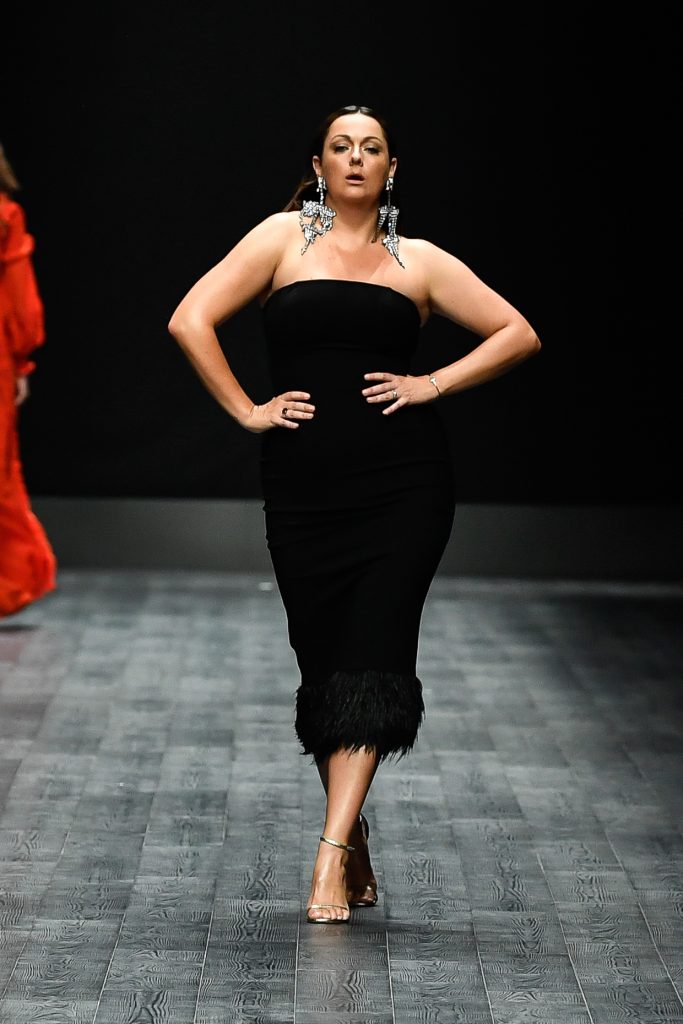
It’s tricky to think how Barber’s antics, wobbling along runways, messily pashing fashion legend Tom Ford, mocking perfectlyperfect scantily clad covergirls in her big underpants and realmum figure, might have fetched up on social media even a few short years ago. Such impudence! Would she have been embraced with the same universal joy before all that’s happened to fashion had happened? Or been stifled by our terribly fashionable (at the time) lack of humour?
NEXTNESS
Fashion’s near future will swing on the fortunes of pandemic-affected economies, naturally. But when its factories, such as Dior’s and Givenchy’s, do switch back to manufacturing perfume instead of hand-sanitiser, and frocks instead of surgical gowns and masks, it’s likely relationships with our (much smaller) wardrobes will blossom along the lines of secret joy and private luxury.
Many of us are already there. We’re on the trajectory dreamed by Li Edelkoort, “resetting our values..returning to (local) cottage industries..”, and teased out in a recent Harvard Business Review that pleaded; “Global elites need new ways to communicate their wealth and status…”
Even the voracious Asian market for global luxury brands was already faltering and connoisseurship of couture crafts and smaller, freer, more expressive and original fashion brands was on the rise before Covid-19.
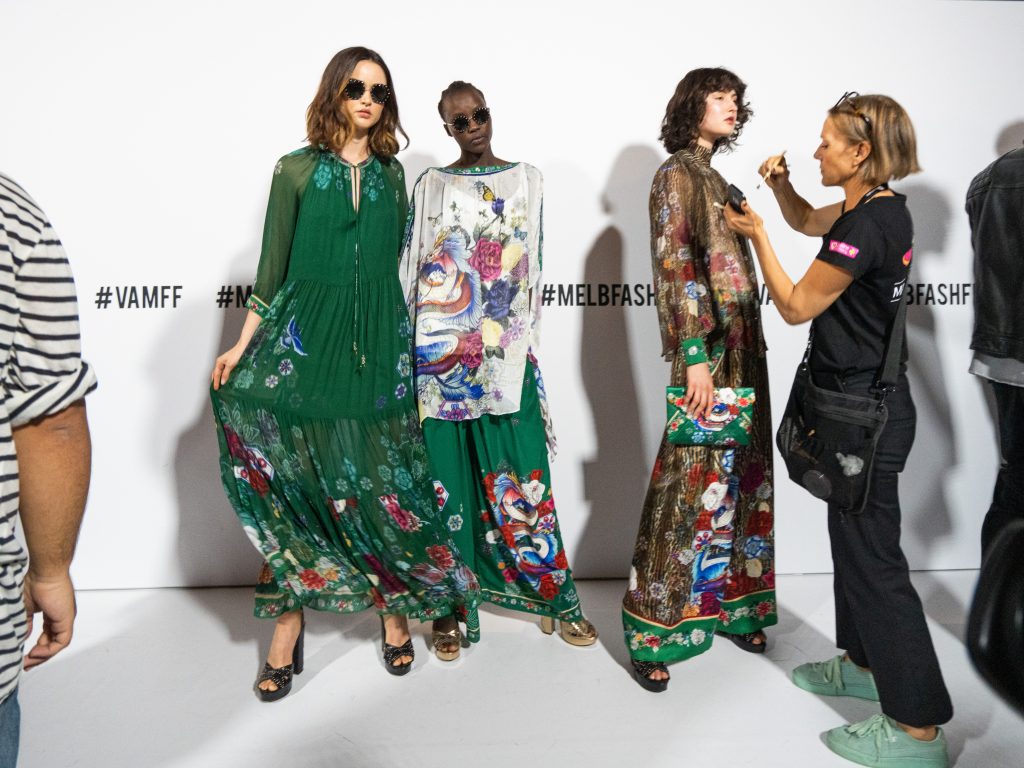
We were already falling in love with collectable, meaningful, curious fashions with deeply embedded narratives: a curious vintage provenance, for example, or an embroidered message stitched into a secret seam, a couturier’s gift of flattering fit, a smallfry designer’s vision that syncs with our psyche.
Narratives such as Yorta Yorta designer Maree Clarke’s extraordinary kangaroo teeth necklaces, crafted in silver and gold using complex indigenous techniques revived after “sleeping” for 200 years, are the rarities fuelling fashion’s evolving definition of luxury.
Clarke’s collection sold out to fashionably enamoured guests at its launch party thrown by the National Gallery of Victoria last year, prompting a new collection to be quickly commissioned.
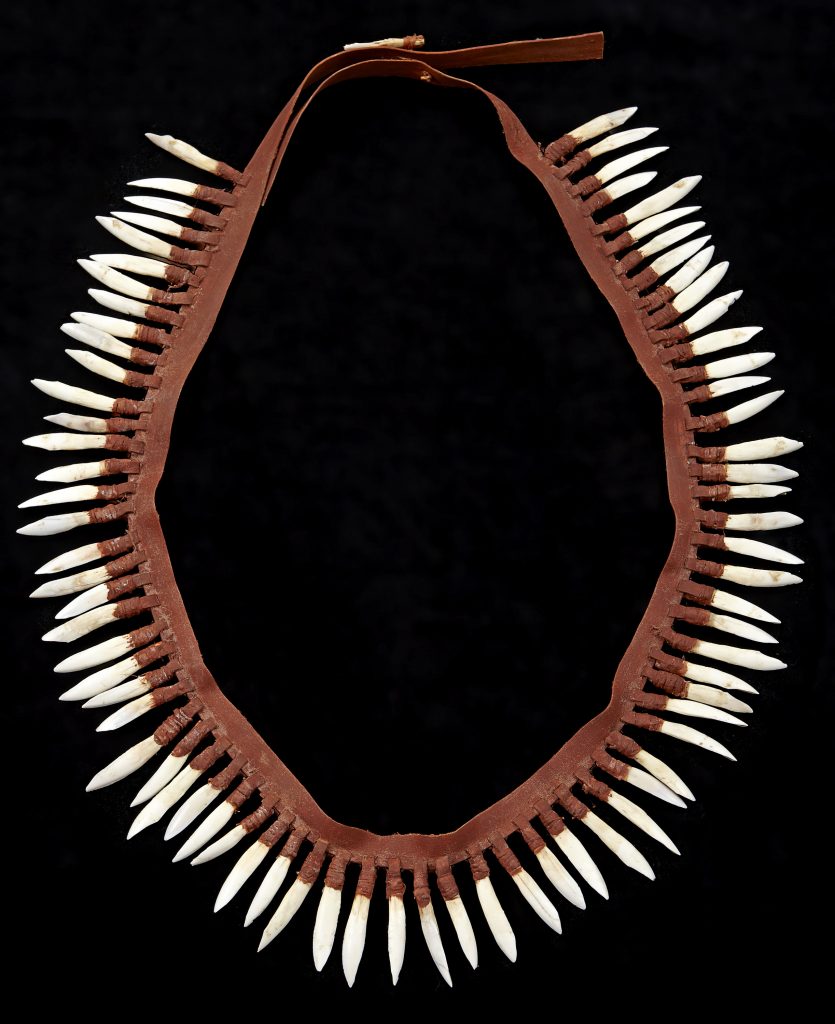
Art galleries in fact, are among the odd-ball sources, including vintage bazaars, second hand dealers and retailers, rental racks, swap meets, off-piste artisan studios, couture ateliers, even antique auctions, we’ve added to our traditional fashion hunting grounds of high street chains, boutiques and e-tailers.
In future, fashion’s most fashionable will be more resourceful and adaptable than ever, more moral and compassionate, more vigilent of dodgy practices and more inclined to muster the chutzpah to step outside the herd, at least on occasion, and to not give a toss if their wildly exotic, self expressive definition of Nowness prompts some dullards to scoff.
Fashion was always for joy and self expression, and to that we will return.

